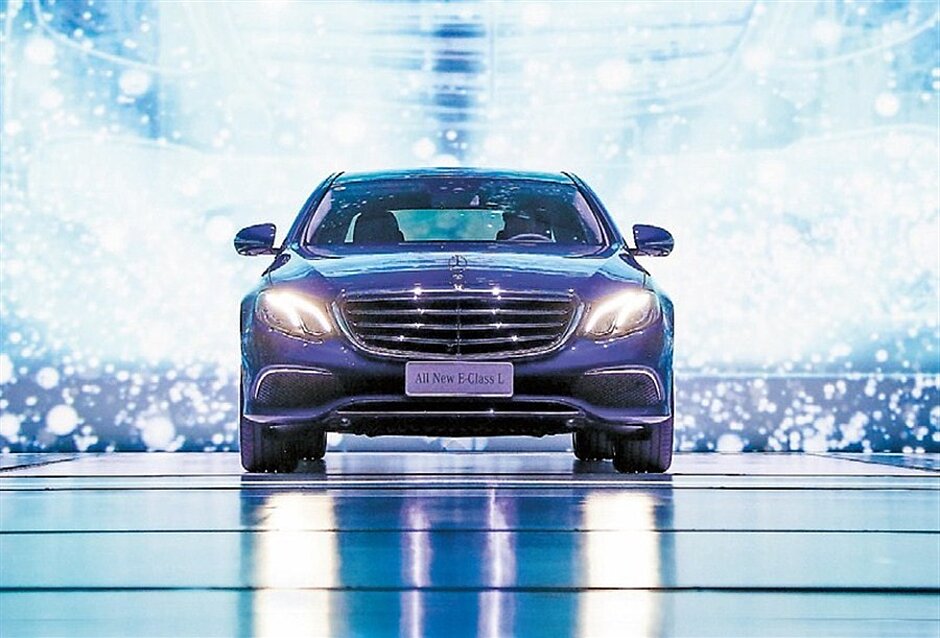ALUMINUM is the new sparkle in China’s auto industry as carmakers weigh its lightweight, energy-saving attributes in commercial applications.
The contest between conventional steel bodies and ones made with aluminum is reminiscent of a Chinese martial arts competition. Steel is strength and masculinity, harking back to northern Shaolin monks whose bodies were as tough as iron. Aluminum is dexterous and feminine, like the southern Wing Chun form of self-defense utilizing both striking and grappling in close-range combat.
Cost is a factor. While aluminum is light and strong in alloy form, it is also more expensive at present because of its relatively small-scale application in automaking.
In today’s China, car companies are striving for better safety and efficiency in road performance. They want the best of both worlds.
Following the Cadillac CT6, the recently launched Mercedes-Benz E-Class, with its long-wheel base for China, and Jaguar’s first Chinese-made car the XFL are forecast to be “killer products” by their makers. They use a combination of aluminum alloy and steel in body structure.
Chinese carmaker Chery just announced it will manufacture its first aluminum-alloy framework-based electric cars later this year.
No car is ever made completely of aluminum alloy. That is a technological myth. References to an “all-aluminum platform” actually mean that the “body in white,” or the sheet metal components welded together before any moving parts are assembled, is made mainly from aluminum.
Jaguar XFL, which is experimenting with perhaps the most aggressive deployment of aluminum technology, has opened China’s first workshop dedicated to aluminum cars. It uses a maximum 75 percent aluminum alloy for the basic structure. For the sake of safety, part of the body needs to be reinforced with high-strength steel. The combination renders the car’s structure 28 percent stronger than a purely steel frame.
Using aluminum reduces the weight of the car by 190 kilograms to 1.8 tons, even after the wheelbase is extended by 140 millimeters to meet the Chinese preference for interior spaciousness. Every kilogram of weight cut can lead to a carbon dioxide emissions reduction of 17 kilograms over the life cycle of a car.
But as applications for aluminum alloys extend from airplanes to private cars, the new trend risks losing its balance and turning upside-down in public perceptions, just like one of those gravity-defying kung fu flying stunts in Chinese films.
Just a few days after Mercedes-Benz launched the new E-Class with its longer wheelbase for China, allegations surfaced that the German carmaker cut corners in its use of aluminum. The Chinese-made E Class was found to be heavier than its overseas version. Wheelbase extension aside, the weight gap was suspected to have been created by replacing part of the aluminum frame with lower-cost steel.
In a later clarification, Mercedes-Benz said the steel replacement occurred only in doors, hoods and lid decks, but had nothing to do with the basic body structure of the car.
Perhaps such budgetary changes benefit consumers, both in sticker price and repair bills. Dents in steel are less costly to repair than dents in aluminum.
Just like ancient martial arts masters, aluminum-made auto parts have their Achilles’ heel. If bent, an aluminum panel cannot be pulled out and straightened like a steel sheet. A total replacement might be needed, requiring longer waiting times and higher costs.
In fact, carmakers choosing to dive into aluminum use face additional costs. At this stage of Jaguar’s local production of its aluminum car, all the rivets required to piece the aluminum parts together are imported. And the production line itself costs much more than traditional steel welding.
Taking all those factors into account, the price of the XFL ranging from 388,000 yuan to 688,000 yuan (US$58,295 to US$103,368) is understandably high as a Chinese-made mid-size luxury sedan. Jaguar argues that this segment has been dominated for too long by traditional, conservative German brands.
As a minority player and relative latecomer to the competition, Jaguar apparently views aluminum as its best shot in differentiating its product from those of competitors.
Mercedes-Benz, with its E Class already holding a dominant position in the segment, doesn’t have to be so aggressive in the application of new materials. It has so many other fancy things to attract buyers, such as a vehicle-to-vehicle communication program called Car2X and intelligent safety functions. Within seconds after detecting an imminent collision, the car’s pre-safety system inflates air chambers in the seat’s side bolster for passengers to prepare for impact and plays “pink noise” so their inner ears can adjust to a high acoustic environment beforehand.
At the end of the day, no matter how magic aluminum may seem, it is still only one factor in a long equation that ultimately determines commercial value.
Carbon fiber, an even lighter and more rigid material for carmaking, is being tried out on a very limited number of cars. Taking the example of Chinese martial arts, this material might be compared to Tai Chi, which defeats the strong with minimal effort. But few masters have the skill to exercise such power in gentle movements. And, to date, very few luxury and super car makers seem willing to try.
Source: Shanghaidaily.com
×


